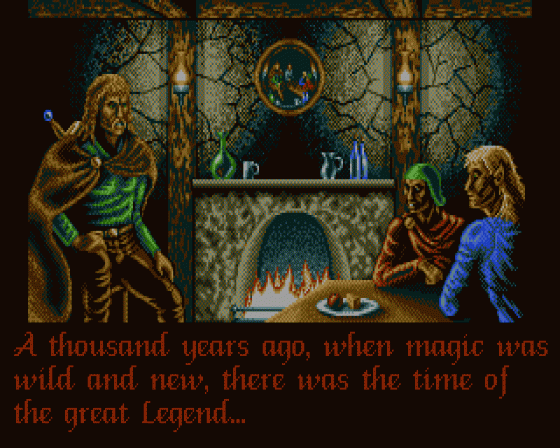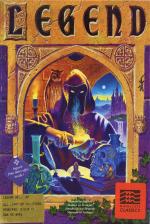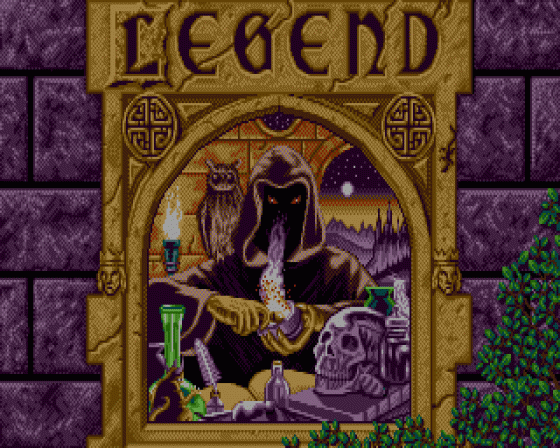
ST Format
 1st August 1992
1st August 1992
Categories: Review: Software
Author: Ed Ricketts
Publisher: Mindscape International Inc
Machine: Atari ST
Published in ST Format #36
Legend
Oh wonderful. It's another RPG. More goblins, leather goods and Swords of Perdition. Seen one, seen 'em all? Well, yes, but have a look at this one anyway. Go on, just a quick peek. You'd make Ed Ricketts' day...
It is a time of dread, a time of woe. But then that's not surprising considering what's happening in the land of Trazere: innocent citizens being ruthlessly transformed into horrible monster things all over the shop by some nameless evil that desires to take Trazere by the throat.
But look, never fear, here comes a band of brave adventurers. These stout fellows have the ability to save the land from all evil. There's the Berserker - the muscle-strewn but sadly intellect-free warrior with the strength of ten, the Troubadour - the golden-throated warbler of stirring but undeniably annoying ditties, the Assassin - a hider in shadows and stealthier than a stealthy thing, and the Runemaster - a learned old wizard with a big spellbook and capacious cloakery.

The task facing this bunch of assorted cliches is to enter the dungeons beneath Trazere and find... um... something. Not quite sure what. You're also not quite sure what to do when you've found it. It's all very mysterious, but the point is to destroy the evil that's blighting the land.
The game is split into two sections. It begins above ground with a map of Trazere. Your group is free to travel over the land, visiting various places of interest - such as keeps, apothecaries and, of course, taverns. Use these locations to prepare for the dungeon, but weapons and spells, get hints from the tavern keepers, and buy songs from the Minstrel, if you can find him. (These songs come in handy later on.) Apart from the temples, where you can regenerate knackered characters, the most important locations are the Guilds. These places enable you to train up levels, so when you re-emerge from the dungeon later on with heaps of experience points, you can use the guilds to move up to the next experience level. This makes the characters stronger. Also, dungeons are only accessible through guilds.
Dungeons are where you spend most of your time. Entering one changes the display to an isometric 3D view with your characters in view. Each is controllable by selecting an action - such as Take or Look - and then the object to use it on. There are plenty of lever/button/pressure pad puzzles to solve and an inordinate number of locked doors. The keys are all available somewhere - but not necessarily in the same dungeon.

Every other room you visit tends to contain monsters of some sort. A big fight ensues, and this is where the characters' specialties are called in. Each class has a certain skill that can be called into play in a battle if you want to boost their performance. The Barbarian can go into a Berseker rage and bash hell out of all and sundry, the Assassin can "hide in the shadows" and sneak up on the monsters from behind, the Wizard can, of course, cast spells, and the Troubadour sings. Great. But the songs he sings alters the party's attributes in some way: the Smithy Song, for instance, temporarily boosts their armour class.
The game box boasts "film quality animation". This is a bit of a fib, as you might have guessed. The character animations are adequate but nothing special, and certainly not as lifelike as in Prince Of Persia. The scenery graphics are somewhat better - well coloured and with a reassuring solidity. There are one or two intro and interlude screens which are a bit dodgy that tend to spoil the atmosphere slightly, but on the whole, everything's spiffy in the graphics department. As usual though, the sound is less than awful: an irritating plinky-plonk tune in normal play and whooshy bits in a fight. Yuck.
Verdict
You could spend half your life completing Legend. The game's really quite repetitive: a great deal of collecting, fighting and backtracking needs to be done. But a sort of haze descends on you when you're playing - you lose track of time and find yourself becoming really quite obsessed. Anyone who might happen to be looking over your shoulder for an hour or two while you play it is likely to wonder what the fuss is about. Tell them to stop breathing down your neck and go away and play it for themselves - with any luck they'll soon understand.
Tag have obviously encoded some sort of subliminal "enjoyment" message into the game. It shouldn't be fun and it shouldn't be absorbing, but it is. It's not strictly aimed at the manic RPGer who revels in Armour Classes; Level Two Warriors and suchlike, so it's more accessible to the average gamesplayer. The spell-mixing section, rather than being a chore, only adds to the game's longevity.
Thoroughly recommended. Get it and see why.
In Brief
- Separation of the game sections - above ground and in the dungeons - works well, and doesn't seem forced.
- Effects can't compete with the likes of Knightmare, but at least you can play this without being annihilated every two minutes.
- Good stuff really.















